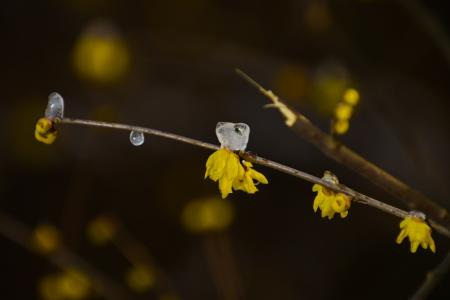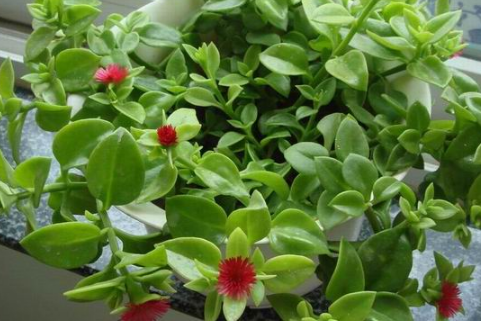Sowing and Propagation of Prunus mume
I. seed collection
Generally speaking, if you want to propagate with seeds, you can buy seeds directly. If you don't want to buy them, you have to wait until the fruits of preserved plums turn yellow, usually around July to August. After taking out the seeds, you have to store them dry.
Second, sowing time
There are two periods of time for dried plum sowing, one is sowing in spring, the other is sowing in autumn. When sowing in spring, the collected preserved plum seeds should be soaked in water for a day, then dried slightly and then planted in the soil. During this period, they must be well preserved and can germinate in about half a month. When sowing in autumn, there is no need to dry hide the seeds, just clean up the collected seeds, and then plant them directly into the soil, which can germinate in about half a month.
Third, maintenance after sowing
The seeds should be watered less after sowing to prevent the heavy moisture of the soil from affecting the growth of preserved plums. It would be better to water them once a month. Also pay attention to diseases and insect disasters, as soon as they are found, they should be dealt with immediately, and pesticides are generally used for treatment.

Propagation mode of Chimonanthus mume 1. Grafting
The propagation mode of Lamei is generally based on grafting, mainly by cutting. Select the developed branches from the mother plant, then cut off the top tip, then use the rootstock and scion to complete the grafting, and finally wait for the wax plum to take root.
2. Ramet
Cut off the top of all the branches selected to prepare the ramets, and then insert the branches into the soil for planting, paying attention to uprooting the whole branch rather than just cutting it.
3. Pressing strip
After cutting the branch near the ground, squeeze a lump of mud on the cut, then cover it with plastic film to prevent water loss, and finally wait for it to take root, and then separate it from the mother plant.
Well, the above is the way to sow and reproduce the preserved plum and the other plum breeding methods supplemented by the editor. That's all for today. Thank you for your reading!
Reproduction of Prunus mume
(1) sowing and reproduction. In general, it is rare to use the way of sowing and reproduction to cultivate Chinese plum. Using this way to breed Chinese plum, the propagation time is long, but the cost is relatively low. In this way, the seeds are usually harvested when the seeds are black in autumn, and then sown. Usually, about 10 days later, the plum will emerge. When the seedling is more than 10 centimeters high, it usually begins to blossom.
(2) grafting. The best time for grafting is from May to June every year. In the month before grafting, we should choose a stout 1-year-old branch and cut off its top tip so that nutrition can be concentrated in the middle of the branch. Generally speaking, the length of scion is about 7~8cm, leaving 1-2 pairs of buds. When cutting the scion, the depth is based on the slightly exposed xylem. Cut down from 1 stroke of the diameter of the rootstock to 3, split the 4~5cm, aim the scion of the preserved plum at the cambium, tie it firmly, and tie it tightly on the plastic bag cover for external use. Take off the plastic bag after a month.
(3) ramet. It is very simple to propagate Chinese plum by ramet method, but it is only suitable for small-scale breeding. Specific ways and methods to select the branchlets with roots of Lamei, split it with the trunk, bury it in the soil, and then fertilize it thinly.
- Prev

one。 Culture steps of hanging Admiralty upside down
1. Some varieties which are easy to bear fruit can be sowed and propagated by sowing. In spring and autumn greenhouse, seedling trays are used to sow seeds. Under the temperature of 15-20 ℃, they germinate in about 15 days, and then blossom in the second year of spring sowing. two。 Put it in a plastic box after inserting it into the basin, usually spray water, and often open the box to breathe when it is too hot.
- Next

The reason for the non-flowering of Peony Cymbidium
1. The main reason why peony hanging orchids do not blossom too often is that we water it too frequently at ordinary times, although we have to water more water during its peak growth period to supplement the nutrients consumed during the growing period, so that the plant can grow faster and better, but if it is overwatered, it will make the plant grow in vain.
Related
- Fuxing push coffee new agricultural production and marketing class: lack of small-scale processing plants
- Jujube rice field leisure farm deep ploughing Yilan for five years to create a space for organic food and play
- Nongyu Farm-A trial of organic papaya for brave women with advanced technology
- Four points for attention in the prevention and control of diseases and insect pests of edible fungi
- How to add nutrient solution to Edible Fungi
- Is there any good way to control edible fungus mites?
- Open Inoculation Technology of Edible Fungi
- Is there any clever way to use fertilizer for edible fungus in winter?
- What agents are used to kill the pathogens of edible fungi in the mushroom shed?
- Rapid drying of Edible Fungi

